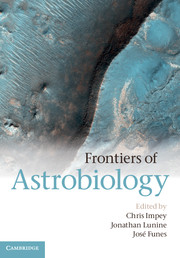Book contents
- Frontmatter
- Contents
- List of contributors
- Part I Introduction
- Part II Origin of Planets and Life
- Part III History of Life on Earth
- Part IV Habitability of the Solar System
- Part V Exoplanets and Life in the Galaxy
- 11 Searches for Habitable Exoplanets
- 12 Review of Known Exoplanets
- 13 Characterizing Exoplanet Atmospheres
- 14 If You Want to Talk to ET, You Must First Find ET
- Index
- Plate Section
- References
12 - Review of Known Exoplanets
from Part V - Exoplanets and Life in the Galaxy
Published online by Cambridge University Press: 05 December 2012
- Frontmatter
- Contents
- List of contributors
- Part I Introduction
- Part II Origin of Planets and Life
- Part III History of Life on Earth
- Part IV Habitability of the Solar System
- Part V Exoplanets and Life in the Galaxy
- 11 Searches for Habitable Exoplanets
- 12 Review of Known Exoplanets
- 13 Characterizing Exoplanet Atmospheres
- 14 If You Want to Talk to ET, You Must First Find ET
- Index
- Plate Section
- References
Summary
Introduction
For centuries and even millennia, mankind has been wondering whether there exist other worlds similar to ours populating the universe. Until about 1600 AD, these questions have remained outside the field of scientific investigation due to a lack of observational means able to address the issue. The situation began to evolve with the invention of optical instruments. It all started with Galileo Galilei, who made the first discoveries of new worlds using the first very modest telescopes. He discovered the four largest satellites of Jupiter, as tiny points of light that circle the giant planet. We are now able to measure the masses and radii of these satellites, compute their mean densities, and conclude that water ice is a major constituent of Europa, Ganymede, and Callisto.
Galileo also found that the Milky Way is made of millions of stars. We now know that our Galaxy contains a few hundred billion stars, but critical questions remain: How many of them have planets? Just a few, or most of them? What if every star has planets like our Sun does? Would these planets be similar to the ones we know around the Sun? We are lucky enough to live in an era of large telescopes and powerful instruments, giving us for the first time the opportunity to try to answer these important questions. This chapter deals with the search and study of these extrasolar planets, worlds orbiting other stars beyond our Solar System.
- Type
- Chapter
- Information
- Frontiers of Astrobiology , pp. 250 - 265Publisher: Cambridge University PressPrint publication year: 2012
References
- 1
- Cited by

